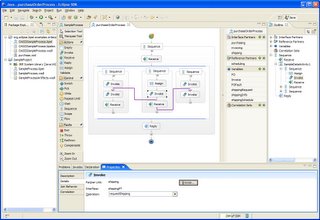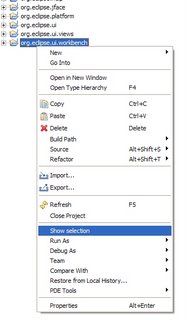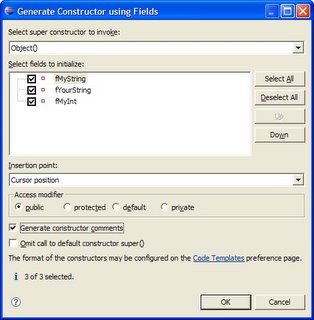Quick view on the BPEL Designer
I have been playing around with the first code drop of the Eclipse BPEL Designer during the last couple of days. It's a quite impressive and neat tool. The current status allows you to open, view, edit and save a .bpel file using the editor. New activities can simply be created by dragging and dropping them from the palette into the editor. Their properties can be modified using the properties view which comes in the new tabbed style.
So basically you are able to model a business process according to the BPEL 1.1 spec. The only little discomfort is that you can not yet create a .bpel file using a wizard. However, if you start from the samples provided you can get along quite well :)

The BPEL editor comes with a set of extension points that enable 3rd party vendors to bind their BPEL runtime or define new component palettes.
There is lots of more stuff to come in the future milestones (including validation, creation wizards, debug, integrating with runtimes etc.) and a first release (1.0) is tentatively scheduled for 1st of October 2006.
More information and resources are available at the BPEL Designer website.






